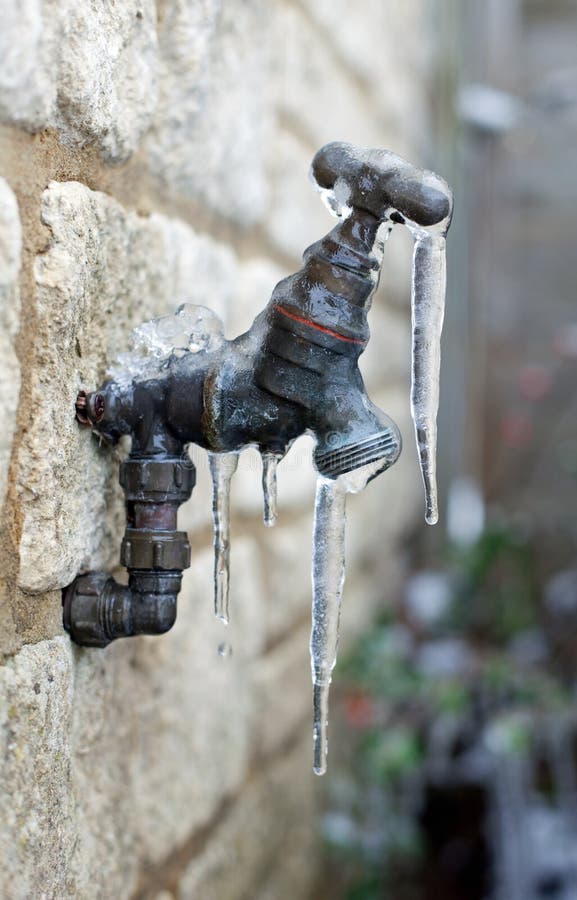How to Defend Plumbing System from Cold Weather: Critical Advice
How to Defend Plumbing System from Cold Weather: Critical Advice
Blog Article
Just about everyone seems to have their personal piece of advice with regards to Helpful Tips to Prevent Frozen Pipes this Winter.

Winter can wreak havoc on your plumbing, particularly by freezing pipes. Below's exactly how to prevent it from occurring and what to do if it does.
Introduction
As temperature levels drop, the threat of frozen pipelines increases, possibly leading to expensive repairs and water damages. Understanding just how to avoid icy pipelines is crucial for house owners in chilly climates.
Comprehending Frozen Pipes
What creates pipelines to ice up?
Pipelines ice up when exposed to temperature levels below 32 ° F (0 ° C) for extended periods. As water inside the pipelines ices up, it increases, putting pressure on the pipe walls and potentially causing them to burst.
Risks and damages
Frozen pipes can result in water disturbances, property damages, and costly fixings. Burst pipes can flood homes and create considerable architectural damage.
Indicators of Frozen Piping
Recognizing frozen pipelines early can avoid them from bursting.
Exactly how to identify icy pipes
Seek reduced water circulation from taps, unusual smells or noises from pipes, and visible frost on exposed pipes.
Avoidance Tips
Insulating at risk pipes
Cover pipes in insulation sleeves or utilize warmth tape to shield them from freezing temperatures. Concentrate on pipelines in unheated or exterior areas of the home.
Home heating strategies
Keep interior areas adequately heated up, specifically locations with pipes. Open cabinet doors to allow warm air to circulate around pipes under sinks.
Safeguarding Outside Pipes
Yard pipes and outside taps
Detach and drain garden hoses prior to winter months. Mount frost-proof faucets or cover exterior taps with protected caps.
What to Do If Your Pipes Freeze
Immediate activities to take
If you believe frozen pipes, maintain faucets available to ease pressure as the ice thaws. Utilize a hairdryer or towels taken in warm water to thaw pipes slowly.
Long-Term Solutions
Structural changes
Think about rerouting pipelines far from exterior walls or unheated areas. Include added insulation to attic rooms, cellars, and crawl spaces.
Upgrading insulation
Purchase premium insulation for pipes, attic rooms, and wall surfaces. Correct insulation assists preserve consistent temperatures and reduces the threat of icy pipelines.
Final thought
Protecting against frozen pipes requires positive procedures and fast feedbacks. By understanding the causes, signs, and safety nets, homeowners can protect their plumbing throughout cold weather.
5 Ways to Prevent Frozen Pipes
Drain Outdoor Faucets and Disconnect Hoses
First, close the shut-off valve that controls the flow of water in the pipe to your outdoor faucet. Then, head outside to disconnect and drain your hose and open the outdoor faucet to allow the water to completely drain out of the line. Turn off the faucet when done. Finally, head back to the shut-off valve and drain the remaining water inside the pipe into a bucket or container. Additionally, if you have a home irrigation system, you should consider hiring an expert to clear the system of water each year.
Insulate Pipes
One of the best and most cost-effective methods for preventing frozen water pipes is to wrap your pipes with insulation. This is especially important for areas in your home that aren’t exposed to heat, such as an attic. We suggest using foam sleeves, which can typically be found at your local hardware store.
Keep Heat Running at 65
Your pipes are located inside your walls, and the temperature there is much colder than the rest of the house. To prevent your pipes from freezing, The Insurance Information Institute suggests that you keep your home heated to at least 65 degrees, even when traveling. You may want to invest in smart devices that can keep an eye on the temperature in your home while you’re away.
Leave Water Dripping
Moving water — even a small trickle — can prevent ice from forming inside your pipes. When freezing temps are imminent, start a drip of water from all faucets that serve exposed pipes. Leaving a few faucets running will also help relieve pressure inside the pipes and help prevent a rupture if the water inside freezes.
Open Cupboard Doors
Warm your kitchen and bathroom pipes by opening cupboards and vanities. You should also leave your interior doors ajar to help warm air circulate evenly throughout your home.

We are very fascinated by Winter Plumbing Precautions: Preventing Frozen Pipes and I hope you appreciated the new article. Are you aware of another person who is sincerely interested in the subject? Please feel free to share it. I appreciate reading our article about 6 Ways to Prevent Frozen Pipes.
Call Today Report this page